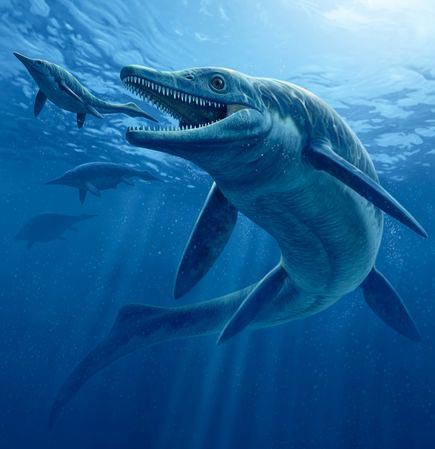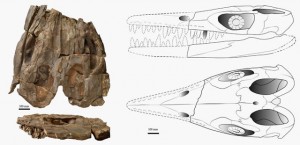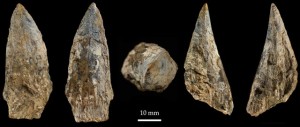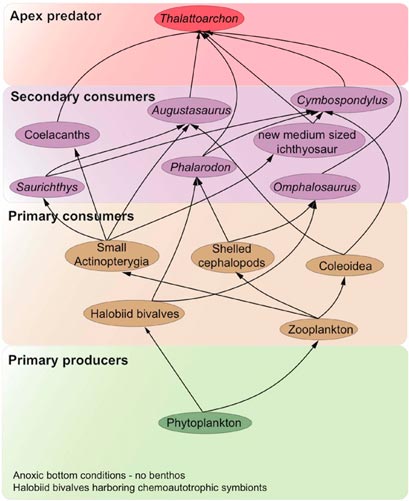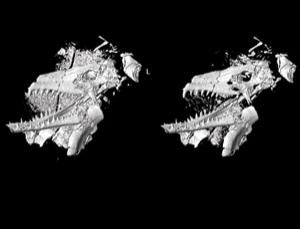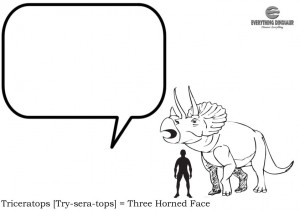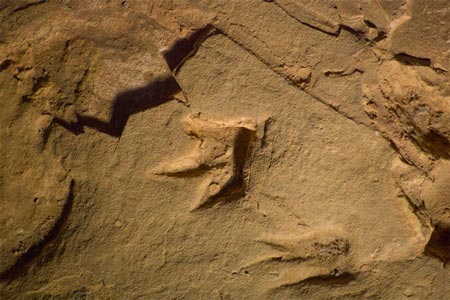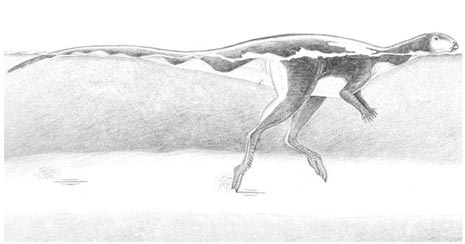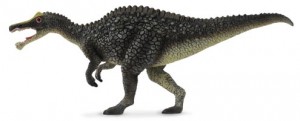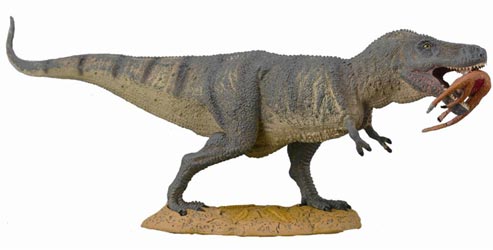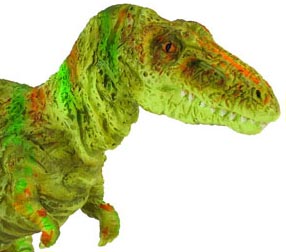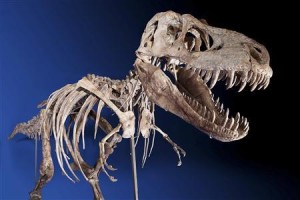New Study Suggests that Oviraptorids Were Show-Offs with their Tail Feathers
Over the last thirty years or so, palaeontologists have built up a large amount of data to suggest that at least some types of dinosaur were feathered. These feathers performed different functions, for example, some dinosaurs sported coats of fine, downy feathers that would have helped to keep these animals insulated and warm. Other types of feather arrangement, particularly longer feathers may have had a display function.
Oviraptorids were Show Offs
A new research paper, published by a scientist based at the University of Alberta (Canada), has suggested that at least one type of dinosaur, the bird-like Oviraptors had a pygostyle structure, compressed tail vertebrae that was sheathed in muscle. This anatomical arrangement, commonly seen in modern birds would have allowed this oviraptorid to shake its tail and use any feathers on the end of it as a visual display device, perhaps to attract a mate or to intimidate a rival or even a predatory dinosaur.
Oviraptors are a group of theropod dinosaurs, distantly related to the likes of Tyrannosaurus rex and Velociraptor that are known from Upper Cretaceous strata of the Northern Hemisphere. These dinosaurs were bipedal with small heads, as a result of their short, compact skulls. They had beaks like birds and a collarbone to strengthen the shoulders as seen in extant birds today.
Shaking Their Tails – Oviraptorids (Ingenia spp.) Displaying
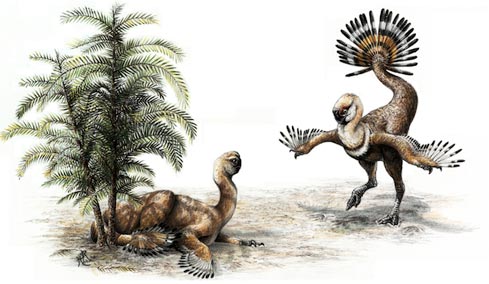
Dinosaur Courtship?
Picture credit: Sydney Mohr, University of Alberta
Oviraptor Fossils
For University of Alberta scientist Scott Persons, the opportunity to study some very fine and near-complete fossil specimens of Oviraptors that had been found in Mongolia gave him the chance to theorise on the structures of these dinosaur’s long tails. He suggests that the tail could have ended in a fan of feathers that could have been extended and “flashed” just like a male peacocks. He refers to these dinosaurs as being natural flirts able to flaunt their colourful feathers in extravagant displays. They may have been able to shake their tails quite vigorously if this new research is correct.
The traditional view of cold-blooded, slow-witted, lumbering giants is gradually being replaced by a picture of very active animals with high-metabolic rates and complex social behaviours. Using extant reptiles such as lizards and crocodiles as metaphors for the Dinosauria (Terrible Lizards), does not stack up to scientific scrutiny.
The Canadian-based scientist examined the fossils of a number of Oviraptor specimens that had been found in Mongolia. He realised that all the dinosaurs in his study would have had long, nimble tails with attachments for strong muscles so that they could be moved back and forth. The last caudal vertebrae of the tail (tail bones), may have been fused together to form a pygostyle, an anatomical feature seen in just one other type of animal – modern birds.
Birds more advanced than the likes of Archaeopteryx (A. lithographica), have their last five tail bones very much reduced and fused into a plate of bone, this is the pygostyle. It seems very early on in bird evolution the long tail associated with theropod dinosaurs began to be shortened and reduced, an adaptation permitting these flying creatures to lose weight from their skeletons and to make movements in flight easier. The pygostyle in the Oviraptors served as a support structure and anchor point for fans of tail-feathers that could have been used for display purposes.
Although no impressions of fossilised feathers are associated with the specimens Persons studied, he concludes that since feather impressions have been associated with other, earlier fossil specimens of oviraptorids, they were most likely present, just not preserved during the fossilisation process.
Oviraptor Fossil Study
The Oviraptor study is for the University of Alberta student’s Master’s thesis. He examined the tail structure of an oviraptorid known as Khaan mckennai. At least three specimens of this four foot long dinosaur are known, all found in the Ukhaa Tolgod region of Mongolia. Persons noted that the tail had many vertebrae squashed together, forming a compact yet flexible structure. Bony spines running along the tail would have provided anchor points for the attachment of large muscles. In addition, other oviraptorid specimens showed a fused tail bone structure, the pygostyle, one example of a member of the oviraptorid group with a pygostyle is the dinosaur known as Similicaudipteryx yixianensis.
Describing his academic work, Persons went onto state:
“You stick a feather fan on the end of a highly dextrous and muscular tail and you’ve got what I think is a tail built for flaunting, that could shake a tail feather side to side, raise it up, strike a pose. Probably to an extent that’s greater than a modern-day peacock or a turkey.”
Tail bones are easily lost when an animal dies, so the evidence for pygostyles in all Oviraptor-like dinosaurs is simply not available for scientists to study but this research raises the intriguing possibility that back in the Late Cretaceous of Mongolia there was a bunch of dinosaur show-offs, displaying and signalling to each other.
The implications of this study are that, it may be possible to identify males and females of a species if the tail bones are found. The logic behind this idea, goes something like this; in modern birds, a number of species go through elaborate courtship displays in order to win and keep a mate. Males of many species, Birds of Paradise, Peacocks, Black Grouse for example, possess elaborate tail fans that they use in visual courtship displays. The caudal vertebrae (tail bones) may therefore be slightly different between males and females of the same species as these bones had to support muscles and tendons to allow the tail fans to be displayed. Tail bones could help palaeontologists to work out which dinosaurs were boys and which were the girls.
A number of model makers have depicted Oviraptors with tail fans, an example of this is the Oviraptor from Safari Ltd, a model that was introduced a few years ago now, replacing an older version of this Asian dinosaur.
The Oviraptor Model from Safari Ltd
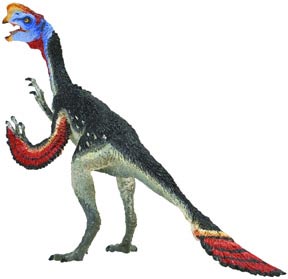
Part of the Carnegie Collectibles Range from Safari Ltd.
Picture credit: Everything Dinosaur
The Oviraptor model is part of the company’s Carnegie Collectibles range of scale models from Safari Ltd.
To view this range of prehistoric animal figures: Dinosaur Figures and Replicas (Safari Ltd).
The study concludes that there were sophisticated and specialised feather appendages in other dinosaur clades not just the ones that evolved into Aves (birds).




